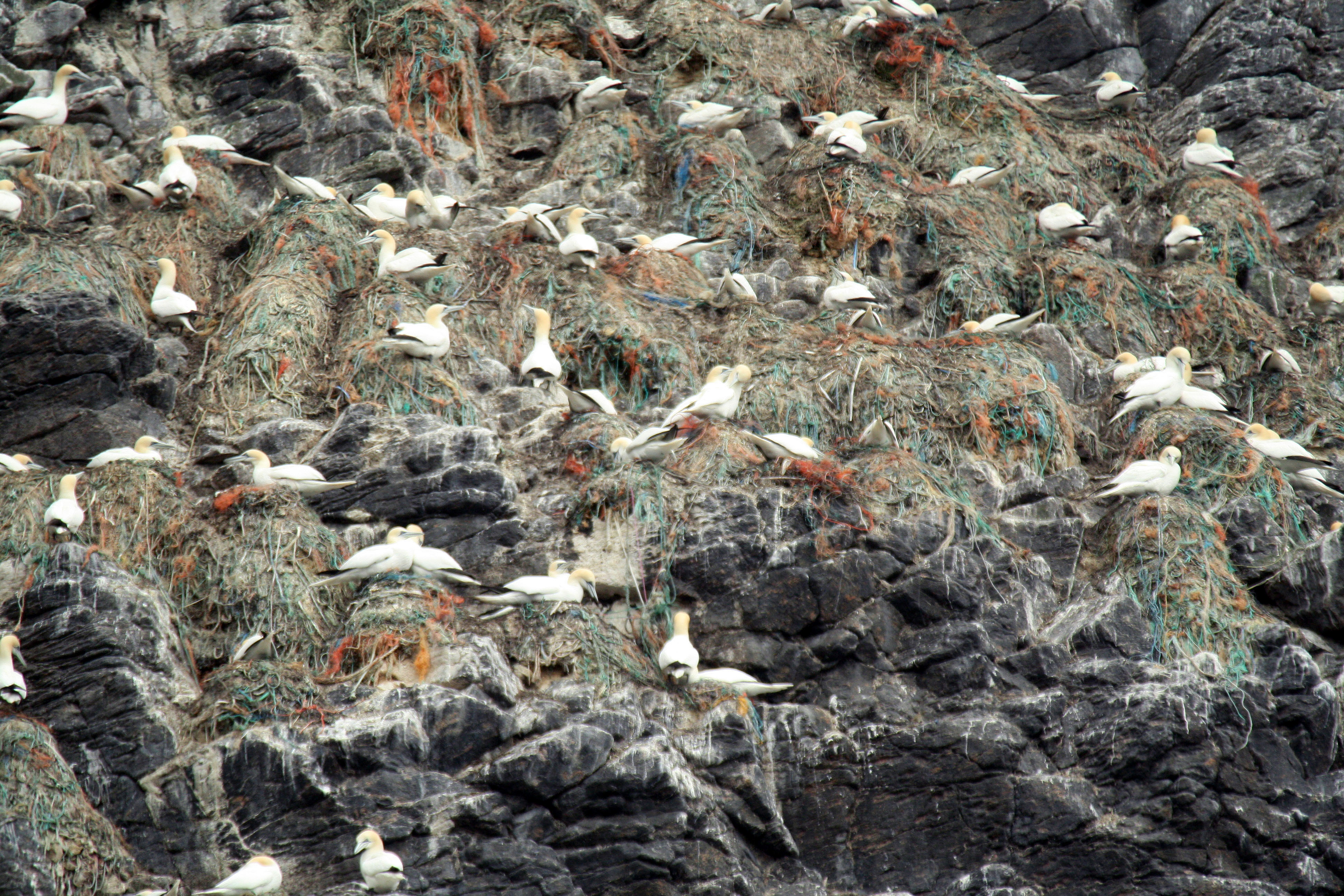Several seabird species are known to incorporate plastic into their nests, particularly those that build substantial surface nests such as Northern Gannet and European Shags. Our recent work looking at what we currently know about seabirds and plastic in the northeastern Atlantic revealed how little is known about nest incorporation of plastic. Data on nest incorporation within this region were found for just two species from two countries: Northern Gannet in Wales and Black-legged Kittiwake in Denmark. Therefore, to date the majority of evidence concerning nest incorporation is anecdotal, with little understanding of how this issue varies over time and space, or among species. To take advantage of nationwide visits to UK seabird colonies in 2018, as part of the ‘Seabirds Count’ national breeding seabird census (2015-2019), we are seeking volunteers to record the proportion of seabird nests that contain plastic, and where possible to take photographs of nests with incorporated plastic. We will use these images to identify the amount of different types, as well as colour, of plastic found in the nests of different seabird species. This information will help us find out where marine plastic pollution is having the greatest impact on our seabirds, and which species are most vulnerable.
If you are working in a seabird colony this year, in the UK or elsewhere in the north Atlantic, and have the capacity to record information on nest incorporation of debris then please complete our Monitoring Form. Data on colonies with no debris observed in nests is just as useful! Thanks in advance.
Even if you are not involved with Seabirds Count (and if you know your seabirds I would thoroughly recommend taking part!) you can still take part in recording plastic in seabird nests. If you know you’ll be visiting a seabird colony this year then please get in touch and we will send you details on how to take part.
Please contact Dr Nina O’Hanlon: nina.ohanlon@uhi.ac.uk


